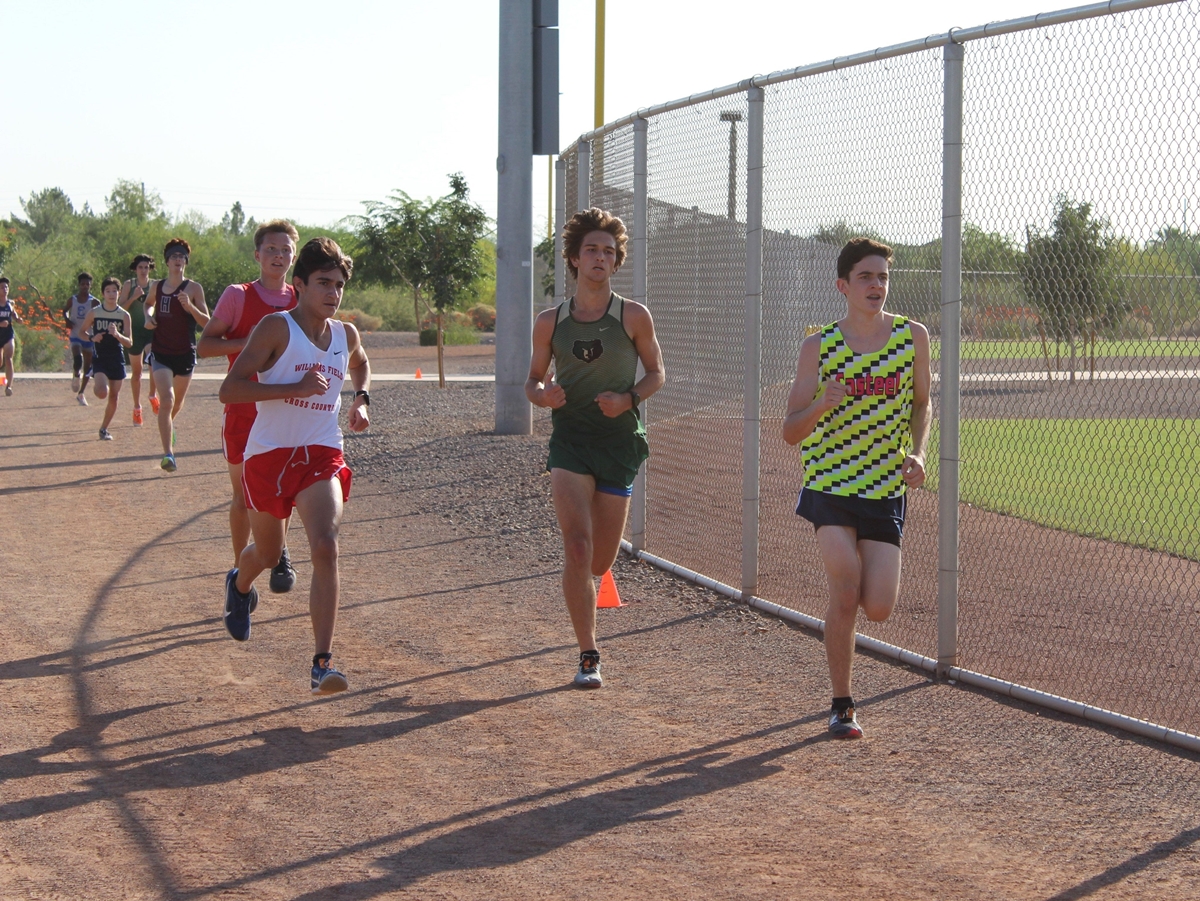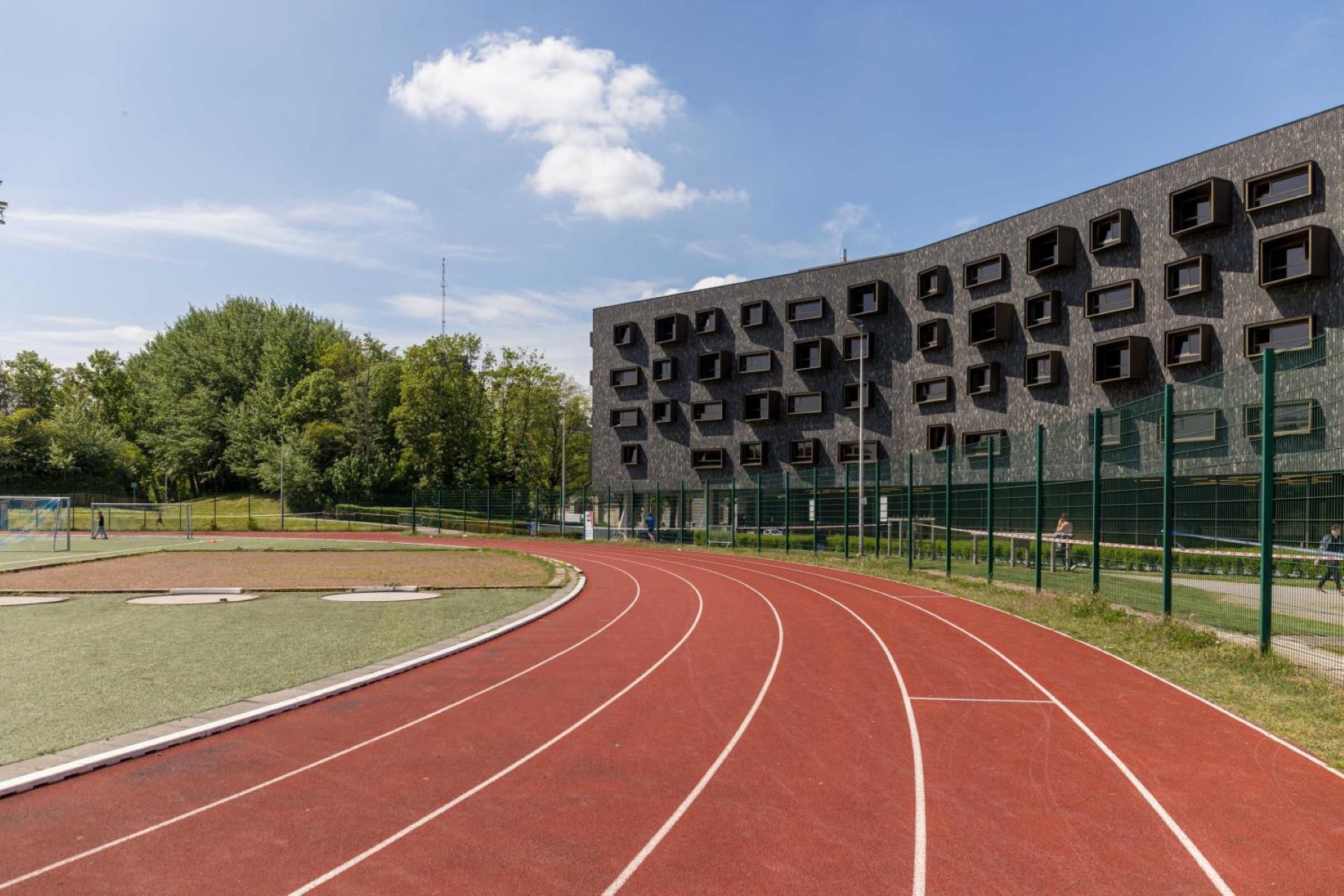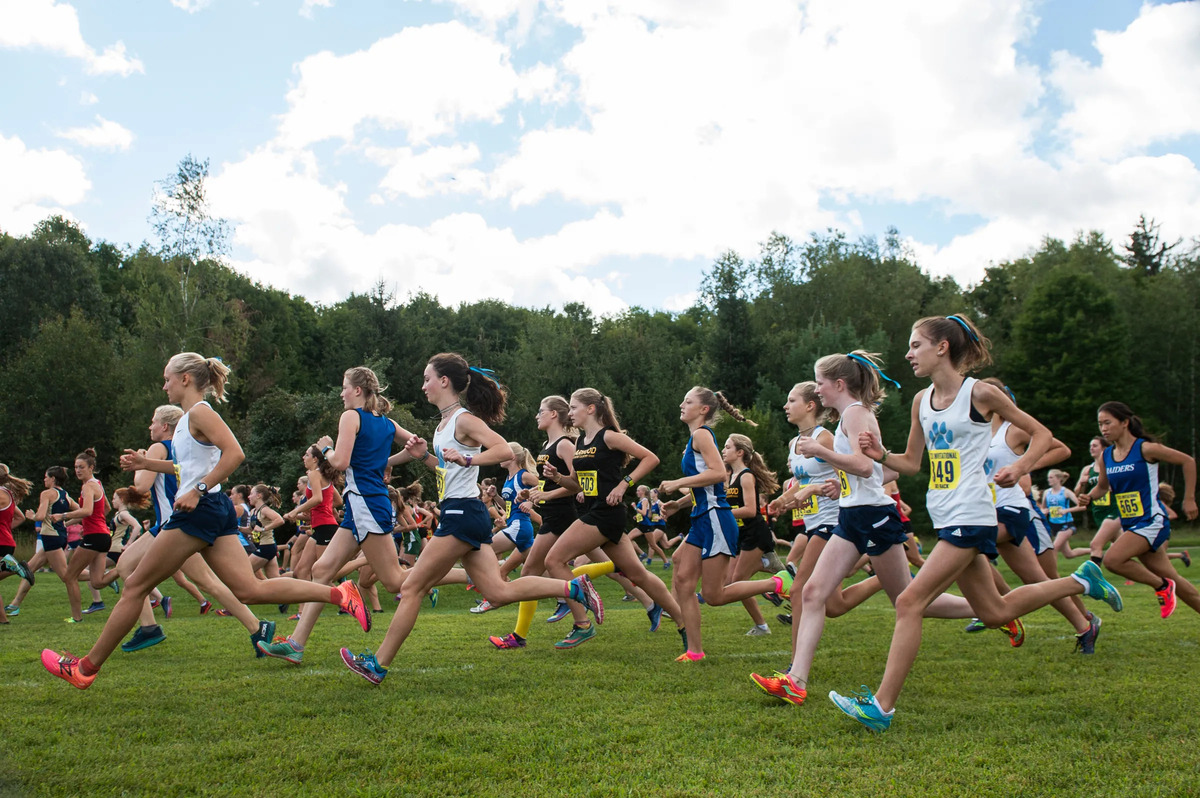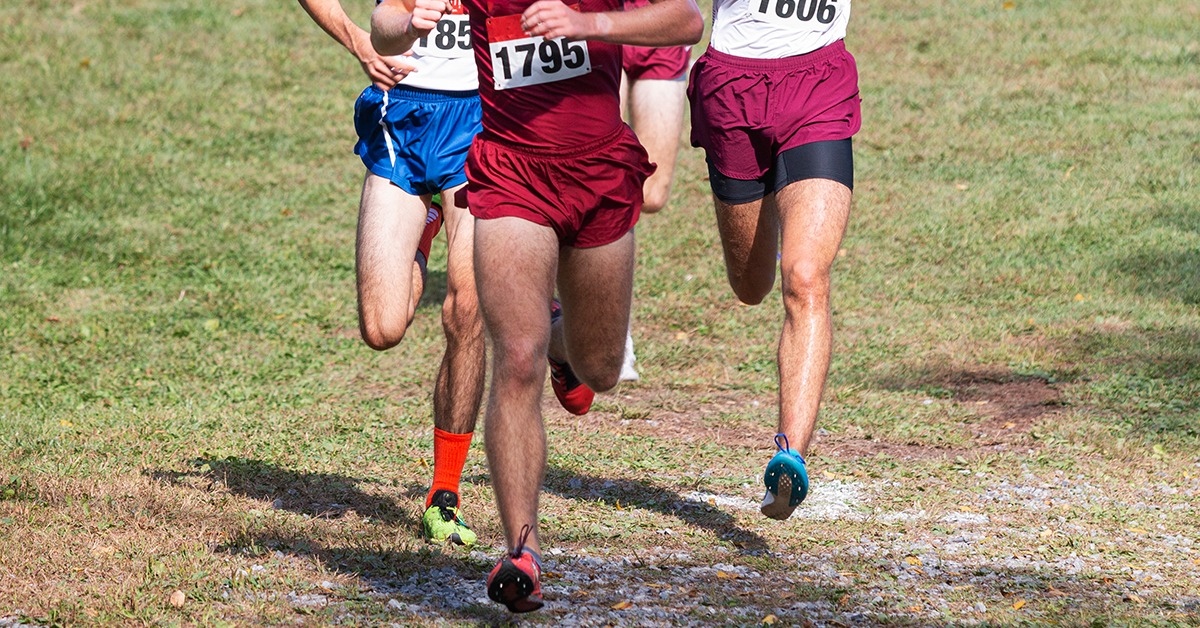What Size Spikes Is For Cross Country
Introduction
When it comes to cross country running, having the right equipment is crucial for optimum performance. One key component of a cross country runner’s gear is the spikes that attach to their shoes. These spikes provide traction, stability, and grip during races on various terrains, such as grass, mud, and even gravel.
Understanding the importance of spike size is essential in order to excel in cross country running. The size of the spikes can significantly impact your performance and comfort during races. Whether you’re an experienced cross country runner or just starting out, it’s important to know which spike size is best suited for your needs.
In this article, we will delve into the world of cross country spikes and explore the different factors to consider when choosing the right spike size. We will also discuss the common spike sizes for cross country running shoes and provide tips on how to determine the correct size for you. Additionally, we will explore the benefits of using the correct spike size and offer advice on how to maintain and replace spikes.
What Size Spikes Is For Cross Country
Understanding Cross Country Spikes
Cross country spikes are specialized attachments that are fitted onto the bottom of cross country running shoes. These spikes are designed to provide additional grip and traction on various types of terrain, ensuring that runners can maintain stability and control during their races.
There are several important factors to consider when it comes to understanding cross country spikes:
- Types of Spikes: Cross country spikes can come in different shapes and sizes, with varying numbers of metal pins or spikes. The most common spike types include pyramid spikes, needle spikes, and compression spikes. Each type has its own advantages and is suitable for specific terrain conditions.
- Material: Cross country spikes are typically made of durable materials such as stainless steel or ceramic, in order to withstand the rigors of off-road running. The choice of material can affect the durability and performance of the spikes.
- Rise: The rise of the spike refers to the height at which the spikes protrude from the sole of the shoe. Different rises are suitable for different terrain conditions, with longer spikes providing better grip on soft surfaces like grass or mud.
- Removability: Some cross country spikes are designed to be removable, allowing runners to customize their spike configuration based on the terrain and personal preference. This flexibility can be beneficial for adapting to different race conditions.
Understanding these key aspects of cross country spikes will help you make informed decisions when choosing the right spike size for your needs. By selecting the appropriate spikes, you can optimize your performance and navigate various terrains with confidence and ease.
What Size Spikes Is For Cross Country
Factors to Consider When Choosing Spike Sizes
Choosing the right spike size for cross country running is crucial for ensuring optimal performance and safety. Here are some key factors to consider when deciding on the appropriate spike size:
- Terrain: Assess the types of terrain you will encounter during your cross country races. Different spike sizes are better suited for specific terrains. For example, longer spikes are ideal for softer surfaces like muddy or grassy tracks, while shorter spikes are more suitable for hard, compact surfaces like gravel or pavement.
- Race Regulations: Familiarize yourself with the rules and regulations set by the governing body or event organizers. Some races may have restrictions on spike length to ensure fair competition and prevent damage to the racecourse.
- Personal Preference: Consider your comfort and preference when it comes to spike size. Some runners may prefer shorter spikes for a more natural feel, while others may opt for longer spikes for added traction and grip.
- Running Style: Take into account your running style and technique. If you tend to have a heel strike or require more stability, longer spikes may be beneficial. Conversely, if you have a forefoot strike or prioritize speed, shorter spikes may be more suitable.
It is important to note that spike sizes are not one-size-fits-all. Each runner’s needs and preferences may vary, so it may be necessary to experiment with different spike lengths and configurations to find what works best for you.
Consulting with experienced runners, coaches, or specialty running stores can also provide valuable insights and guidance when selecting the right spike size. Their expertise and experience can help you make an informed decision based on your specific needs and race conditions.
By considering these factors, you can make a well-informed choice and maximize your performance during cross country races.
What Size Spikes Is For Cross Country
Different Spike Sizes for Varying Terrain
One of the key factors to consider when choosing the right spike size for cross country running is the type of terrain you will encounter. Different spike sizes offer various benefits and performance advantages on different surfaces. Let’s explore the spike sizes commonly used for varying terrain:
- Short Spikes (4-6mm): Short spikes are ideal for hard surfaces such as pavement or compacted dirt trails. They provide excellent traction and stability without penetrating too deeply into the ground. These spikes are also suitable for dry or firm grass surfaces.
- Medium Spikes (6-9mm): Medium spikes are versatile and can be used on a wide range of terrains. They offer a good balance between grip and comfort, making them suitable for moderately soft surfaces like grass, dirt, and light mud.
- Long Spikes (9-12mm): Long spikes are designed for soft and muddy terrain. The longer length allows for deeper penetration into the ground, providing enhanced grip and traction. They are perfect for challenging conditions like muddy trails or wet grass fields.
- Mixed Spike Configurations: Some cross country runners prefer to use a combination of different spike lengths, known as mixed spike configurations. This allows them to adapt to changing terrain conditions during a race. For example, a runner might use shorter spikes in the first half of a race on harder surfaces, and then switch to longer spikes for the second half when encountering softer or muddier sections.
It’s important to consider the specific terrain you will be running on and choose the spike size that best suits that surface. Using the correct spike size can provide you with the necessary traction and grip needed to maintain speed, prevent slipping, and navigate challenging terrains with confidence.
Additionally, keep in mind that if you often encounter a variety of terrains or if the conditions of a particular race are uncertain, opting for a versatile spike size, such as medium spikes, can be a practical choice.
What Size Spikes Is For Cross Country
Common Spike Sizes for Cross Country Running Shoes
When it comes to cross country running shoes, there are several common spike sizes that runners can choose from. These sizes are designed to provide optimal performance and traction on varying terrains. Let’s explore the most commonly used spike sizes for cross country running shoes:
- 5mm Spikes: 5mm spikes are the shortest and are suitable for hard surfaces such as pavement or compacted dirt trails. They offer moderate grip and stability without causing excessive penetration into the ground.
- 9mm Spikes: 9mm spikes are considered a medium length and are versatile enough for a wide range of terrains. They provide a good balance between grip and comfort and are suitable for grass, dirt, and light mud.
- 12mm Spikes: 12mm spikes are the longest common length and are ideal for soft and muddy surfaces. They offer deep penetration into the ground, enhancing grip and traction in challenging conditions.
- Mixed Spike Configurations: Some cross country runners opt for mixed spike configurations, using a combination of different spike lengths on their shoes. This allows them to adapt to varying terrains during a race and optimize their performance.
When choosing spike sizes for your cross country running shoes, it’s important to consider the specific conditions and terrains you will be facing. If you primarily run on hard surfaces, shorter spikes may be more suitable. For softer or muddy terrains, longer spikes can provide better traction.
It’s worth noting that the spike sizes mentioned above are common recommendations, but the optimal spike size for you may depend on factors such as personal preference, running style, and the specific race conditions. Consulting with experienced runners, coaches, or specialty running stores can offer additional insight and help you make an informed decision.
Remember, choosing the right spike size for your cross country running shoes can greatly enhance your performance and ensure you have the necessary grip and stability to excel in your races.
What Size Spikes Is For Cross Country
How to Determine the Right Spike Size for You
Choosing the right spike size for your cross country running shoes can greatly impact your performance and comfort on the racecourse. While there are general guidelines, the optimal spike size may vary depending on individual factors. Here are some steps to help you determine the right spike size for you:
- Consider Your Running Style: Take into account your running technique and style. Do you tend to have a forefoot strike, midfoot strike, or heel strike? Understanding your running mechanics can help you identify whether you need a spike size that provides more traction and stability at the front or back of your foot.
- Assess the Terrain: Evaluate the types of terrain you commonly encounter during cross country races. Are they predominantly hard surfaces, soft and muddy trails, or a combination of both? This assessment will give you an idea of the spike length required to provide adequate grip and traction on those terrains.
- Experiment: It can be beneficial to experiment with different spike lengths during training runs. Start with a medium spike size, such as 9mm, and see how it performs on different surfaces. You can then try shorter spikes for harder terrains and longer spikes for softer or muddier conditions. Assess how each spike size affects your performance, comfort, and stability.
- Seek Expert Advice: Consult with experienced runners, coaches, or specialty running stores for guidance. They can offer insights based on their experience and knowledge. They may even analyze your running form and give recommendations on spike size based on your individual needs.
Remember, the right spike size will vary for each runner, depending on personal preference, running style, and racing conditions. It may take some trial and error to find the perfect spike size that suits your needs.
By following these steps and being open to experimentation, you can determine the spike size that provides you with the optimal combination of traction, stability, and comfort. This will enable you to perform at your best during cross country races.
What Size Spikes Is For Cross Country
Benefits of Using the Correct Spike Size
Using the correct spike size for your cross country running shoes offers several benefits that can greatly improve your performance on the racecourse. Here are some advantages of using the right spike size:
- Enhanced Traction: The proper spike size ensures optimal grip on the specific terrain you are running on. Whether it’s hard surfaces, soft trails, or muddy fields, having the right spike size enables you to maintain traction and prevent slipping, ultimately allowing you to run more efficiently.
- Improved Stability: Using the correct spike size provides stability by planting your foot securely on the ground. This stability is especially crucial when navigating challenging terrain, as it helps prevent unnecessary foot movement and reduces the risk of ankle injuries.
- Increased Speed: With the right spike size, you can propel yourself forward more confidently and efficiently. The improved grip allows you to push off the ground with greater force and maintain a consistent pace, thus helping you maximize your speed during races.
- Boosted Confidence: Properly sized spikes instill confidence in your footing, giving you the assurance to tackle any terrain with ease. This mental boost can have a positive impact on your overall performance, allowing you to focus on your race strategy and achieve your goals.
- Reduced Fatigue: When you have the correct spike size, your feet and leg muscles experience less strain and fatigue. The right amount of traction and stability reduces unnecessary movements and energy expenditure, helping you conserve energy for the duration of your race.
- Customized Adaptability: By having access to different spike sizes, you can customize your footwear to best match the specific race conditions. Whether it’s switching to shorter spikes for harder terrains or opting for longer spikes for softer surfaces, this adaptability allows you to optimize your performance and adapt to different course challenges.
Using the correct spike size for your cross country running shoes is essential for reaping these benefits. It not only enhances your performance but also reduces the risk of injuries and provides you with the confidence and stability you need to perform at your best.
What Size Spikes Is For Cross Country
Tips for Maintaining and Replacing Spikes
Proper maintenance and timely replacement of spikes are essential to ensure their longevity and optimal performance. Here are some helpful tips for maintaining and replacing your cross country spikes:
- Regular Cleaning: After each race or training session, remove any debris or dirt accumulation from your spikes. Use a small brush or an old toothbrush to clean the spikes gently. This prevents dirt from interfering with their functionality and ensures consistent grip.
- Inspect for Damage: Regularly inspect your spikes for signs of wear and tear, such as bent or damaged pins. Replace any spikes that are damaged or no longer provide enough grip. Continuing to use worn-out spikes can compromise your performance and increase the risk of slipping or injury.
- Monitor Spike Length: Pay attention to the length of your spikes over time. As they wear down through use, they may become shorter and lose effectiveness. Consider replacing spikes that have become significantly shorter than their original length to maintain optimal traction.
- Replace as Needed: Different courses and race conditions may require varying spike lengths. It’s important to have multiple sets of spikes available to be prepared for different terrains. Replace your spikes accordingly based on the specific race requirements.
- Store Properly: When not in use, store your spikes in a safe and dry place. Keep them away from extreme temperatures or humidity, as this can cause damage or corrosion to the metal. It’s also helpful to keep them in a secure container or bag to prevent losing or misplacing individual spikes.
- Consult with Experts: If you’re unsure about the condition of your spikes or need advice on replacement, consult with experienced runners, coaches, or specialty running stores. They can provide guidance on selecting the right spike sizes, replacing worn-out spikes, and offer recommendations based on their expertise.
By following these maintenance tips and being proactive in replacing worn-out spikes, you can ensure consistent performance and maximize the lifespan of your cross country spikes. Remember, well-maintained spikes are crucial for maintaining traction, stability, and grip during your races.
What Size Spikes Is For Cross Country
Conclusion
Choosing the right spike size for cross country running is a critical aspect of optimizing your performance and ensuring traction on various terrains. By understanding the factors to consider when selecting spike sizes, you can make informed decisions based on your personal preferences, running style, and race conditions.
Whether you are running on hard surfaces, muddy trails, or a mixture of terrains, selecting the proper spike size is essential. Shorter spikes provide grip and stability on hard ground, while longer spikes offer deeper penetration for traction in softer or muddier conditions. Medium spikes offer a versatile option for a wide range of terrains.
Regular maintenance and timely replacement of spikes are crucial to their longevity and effectiveness. Clean your spikes after each use, inspect them for damage, and replace worn-out spikes as needed. Proper storage in a dry place will also help preserve the quality of your spikes.
Remember, the right spike size will vary from runner to runner. It’s important to experiment, seek advice from experienced runners or coaches, and consider your personal running style before settling on the ideal spike size for your cross country running shoes.
By using the correct spike size, you can enjoy enhanced traction, increased stability, improved speed, reduced fatigue, and increased confidence on the racecourse. With careful consideration and maintenance, your spikes will support you in reaching your full potential as a cross country runner.










